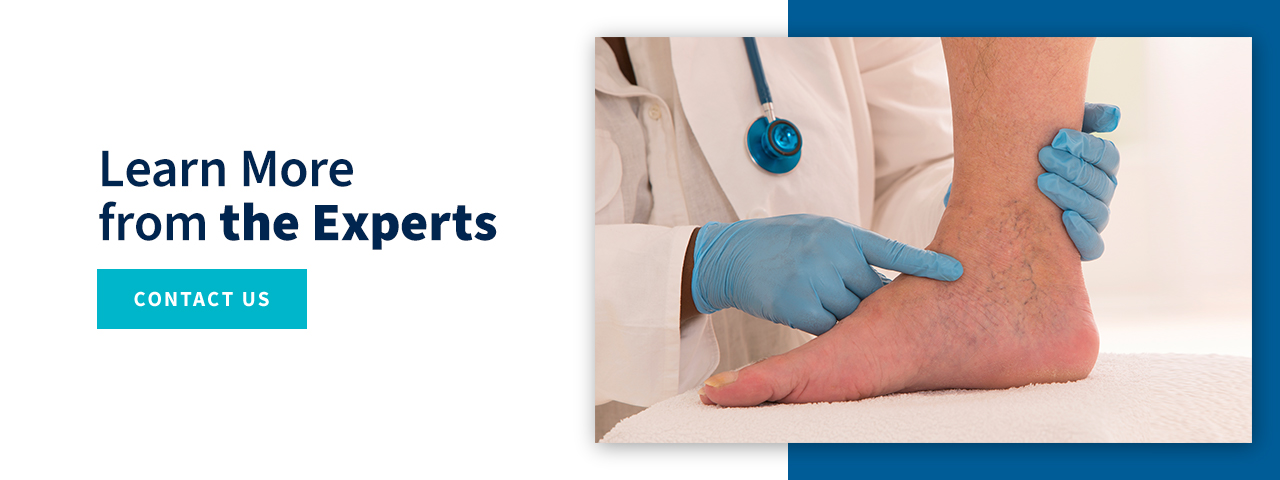
We all bump into things or get cuts and scrapes on our legs from time to time. After about two weeks after your injury, the affected area should be showing signs of healing. However, if the wound appears to be growing or weeping, it may signify a venous leg ulcer.
Leg ulcers are typically large and shallow, with uneven edges that may drain or weep. Some leg ulcer symptoms you may experience include swelling in your leg or red, itchy skin around the wound. Your legs may also feel heavy or achy or begin throbbing, with discolored splotches surrounding the injury.
The most common reason for a leg wound failing to heal is venous disease, which impacts the blood circulation in your body.
Blood pumps from the heart throughout the entire body with the help of veins. If the veins become weak or damaged, this may cause the blood to flow backward toward your feet and create excess pressure on the veins.
When this happens, the veins swell and force blood into the tissue of your skin and make it hard for your body to complete its normal healing process. Some additional causes of a venous leg ulcer include:
While venous leg ulcers are the most prevalent, other types of leg ulcers include:
Your treatment will depend on numerous factors, such as your current health status and medical history. Some circumstances your doctor will consider are:
The most common treatment option for Venous Leg Ulcers or VLU’s is compression therapy, which improves blood flow by applying pressure to your leg. During this treatment option, you will use compression stockings to help reduce swelling and improve blood flow to prevent additional sores or ulcers.
If you have a more advanced leg ulcer, we may recommend interventions such as sclerotherapy, vein ablation by endovenous laser therapy or Venaseal cyanoacrylate adhesive. Sclerotherapy is a minimally invasive surgery option that involves injecting a chemical into the damaged vein to cause it to collapse and improve blood flow. During endovenous laser treatment, one of our specialists will insert a small catheter into the vein and apply heat to cause the vein to collapse and seal to positively impact blood flow. Venaseal therapy introduces droplets of medical grade adhesive into the vein and with pressure causes the vein to seal closed.

All Central Florida Vein and Vascular Center procedures are minimally invasive to improve patient comfort and convenience. All of our doctors have multiple accreditations and are active members of the American Vein and Lymphatic Society, allowing you to rely on our team to provide quality care. Please complete our contact form today to schedule a consultation and take the first step toward healing.